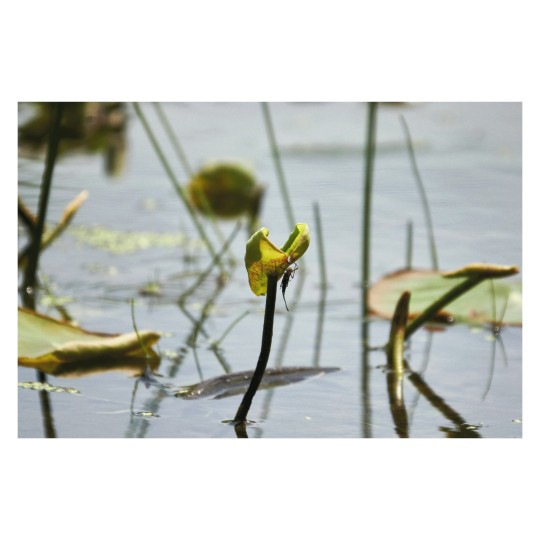#ヤゴ
Explore tagged Tumblr posts
Text


2025/04/25
桜が終われば、藤の季節。
散り終わりの桜の木には、クマバチが飛び交い
その流れからか?藤棚に移行するので
フジの季節は、クマバチを回避しながら
藤棚鑑賞をするのが定番コース
そもそも、クマバチを、この辺りでは
クマンバチと呼んでたので、
うわっ!クマンが、ブチおらぁ〜と、
ガキの頃は言ってたのだが、
今は、そのガキすら居ない。
クマンは、おっても、ガキはおらん。


たんぽぽも、ピークを超えたのか
綿毛となり、ふわふわと一面を覆ってるエリアもある

ヤゴから孵化したばかりの、トンボもいた。
ラッキー🐕と生活をすると、散歩はマストとなり
お陰で四季の移り変わりを感じられる事柄が
日常にはゴロゴロと転がってる事に気付く。
過去に執着しない姿も、
目一杯の愛情と信頼を寄せる姿も
人間からは得られない感動や気付きがある
そして、教わる事も多い。
そういえば、陽が長くなった…

19時過ぎても、こんな明るさ↑
そして、朝5時半で、この↓感じ。

昔は、この電線だらけの空が嫌いだった。
いや、昔から嫌いだった。
今でも電線の無い、スコっ!と抜けてる空が好き
鉄塔と電線まみれの空は、遠く感じて寂しくもある
そんな訳で、夕焼けから朝焼けまで
毎日、ラッキー🐕と一緒に居ます。
4時間程、寝ます。
おさしみやさい
3 notes
·
View notes
Text
Yago Ametsukana (Revisited)
My analysis on Yago Ametsukana was the first post I've ever made here, and while I still think it holds up to scrutiny 100%, I've since found a comfortable format in which to write these, so think it'd be nice to revisit and expand on it~!
And so, here's

A Thousand Blades and a Thousand Arms — Yago Ametsukana
Name: Yago Ametsukana
Given Name: Yago
Their given name, Yago (ヤゴ), is the Japanese word for dragonfly larvae, nymphs and naiads.
This is reinforced by its official Chinese rendering as 水蠆, which is also the Japanese kanji for the word and refers explicitly to the same things.
Family/God Name: Ametsukana
Their family name, Ametsukana (天目津金) is modelled after the names of Shinto deities, like those one would find in the Kojiki or Nihon Shoki, thus it takes a bit to analyse.
This name can be sub-divided into 3 parts:
First is "ame" (天目), the pronunciation along can refer to "the heavens", though further dissecting the name reveals that "a" is assigned specifically to 天, which means "heaven(ly)".
This can be deduced from the fact that "me" is a standard reading of 目, which means "eye". Taken as a whole, "ame" here combines to give "heavenly eye".
Secondly is "tsu" (津), the word literally means "harbour", though its often used in Shinto deity names for its pronunciation alone as an attributive particle, in other words, it means "of".
Finally is "kana" (金), which could mean "gold, metal or money", though considering Yago's occupation and domain likely means "metal"
Putting the three parts together, the name probably means something along the lines of "metal of the heavenly eye".
Curiously, this surname actually seems to be moreso Yago's title as a god rather than their name, as we see Yago invite Sukune to "become the next Ametsukana" in BPoHC.
Mythological Inspiration
Like a good chunk of Len'en characters, Yago is based on Japanese mythology, not just one such figure, but three! Let's quickly go over them here:
Shinto Deity: Ame-no-Mahitotsu-no-Kami
Firstly and most majorly, Yag is based on the Shinto god Ame-no-Mahitotsu-no-Kami (天目一箇神 lit. "Heavenly one-eyed god").
Below: The Usuno Hitotsume Shrine (薄野一目神社), one of the places where Mahitotsu is enshrined. (I couldn't find a traditional depiction of him so have this instead.)
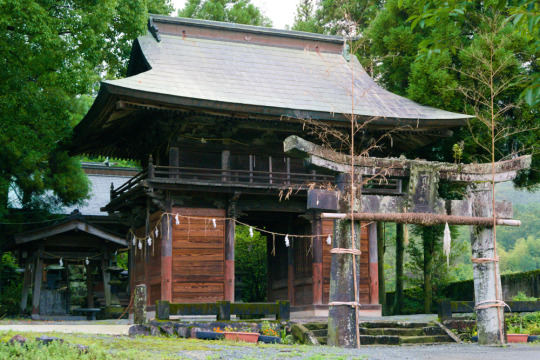
Mahitotsu's Domain & Story
He is a god of metalworking and blacksmithing, of metalworkers and miners, mirrored by Yago's own domain of blacksmithing.
A god closely associated with him is Amatsumara (天津麻羅). He appears in the Kojiki, where he helps forge the mirror Yata no Kagami, used to lure the sun goddess Amaterasu out of hiding.
In fact, in the Kogo Shūi (古語拾遺), Mahitotsu is said to in fact have assumed the identity of Amatsumara during those events, and are thus the selfsame entity.
Perhaps this very event is what lead to Yago's contributions being acknowledged and their subsequent promotion to godhood.
The Hyottoko Mask
Also, Mahitotsu is sometimes said to be the origin of an archetypal character known as the Hyottoko (火男 lit. "fire man"), often acting as a comedic character during shrine festivals and other festivities.
Below: A typical hyottoko mask.
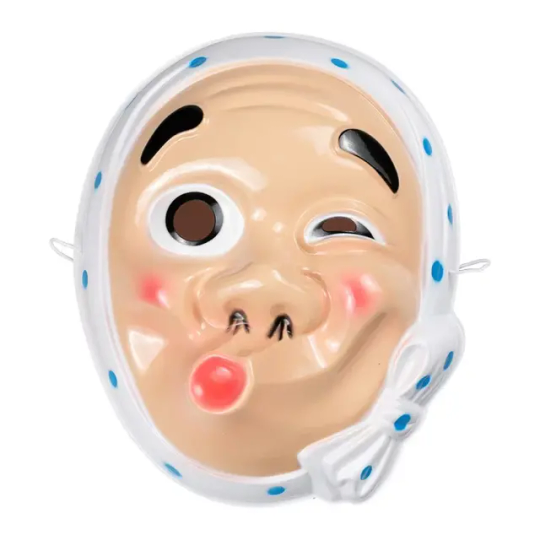
We see Yago themself wear the hyottoko mask on their head, as well as wearing the same headscarf a typical hyottoko mask wears over their eyes.
The 5-7 Paulownia Shrine Crest
As a final note, the most common shrine crest for shrines where Mahitotsu is worshipped is the 5-7 paulownia crest (五七桐紋), named so for the number of flowers on each cluster.
A stylised version of this crest is found in Yago's spell card background as well, no doubt a reference to their irl sites of worship.
Below: One of the layers of Yago's spell card background, featuring the stylised crest (most prominent to the left of Yago's head), with the standard version of the crest in the bottom-left corner.

Youkai: Ippon-datara
Yago is also based on the youkai ippon-datara (一本踏鞴 lit. "one-legged bellows"), who is often times said to in fact be the corrupted form of Mahitotsu after he fell from grace.
Below: An ippon-datara talisman, the specialty of Mastumoto Studio (松本工房), said to protect travellers, especially on mountains.
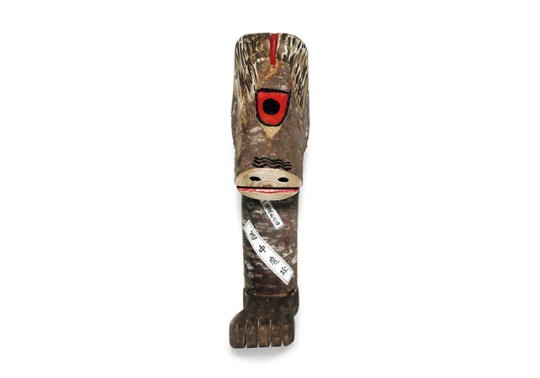
While tales and descriptions related to the ippon-datara vary greatly from region to region, they all generally agree that it is a fearsome being with a single leg, on which an eye as large as a dish sits.
Varieties aside, it's agreed upon that the "datara" in the name refers to tatara-shi (タタラ師), a type of blacksmith that works with Japan's historical tatara furnaces.
Based on this connection, the origins of the ippon-datara's two most consistent traits can be deduced:
It only has one eye as blacksmiths would've constantly kept one eye on the furnace, leading to its deterioration.
It only has one leg, as the other would've gone bad from working the bellows for so long.
This, by the way, would also be the same reason Mahitotsu is the "one-eyed" god of blacksmithing.
These are referenced in Yago's design as well, their left eye covered by a piece of headscarf and left foot modified to accommodate for how it had "gone bad from an occupational disease".
Shinto Deity: Kanayago-no-Kami
Finally, we come to their last basis, the Shinto goddess Kanayago-no-Kami (金屋子神 lit. "child-god of the metal house").
Right off the bat, we already note the inclusion of "yago" in her name, which is already interesting, but there is of course more~.
Below: A hanging scroll depicting Kanayago.
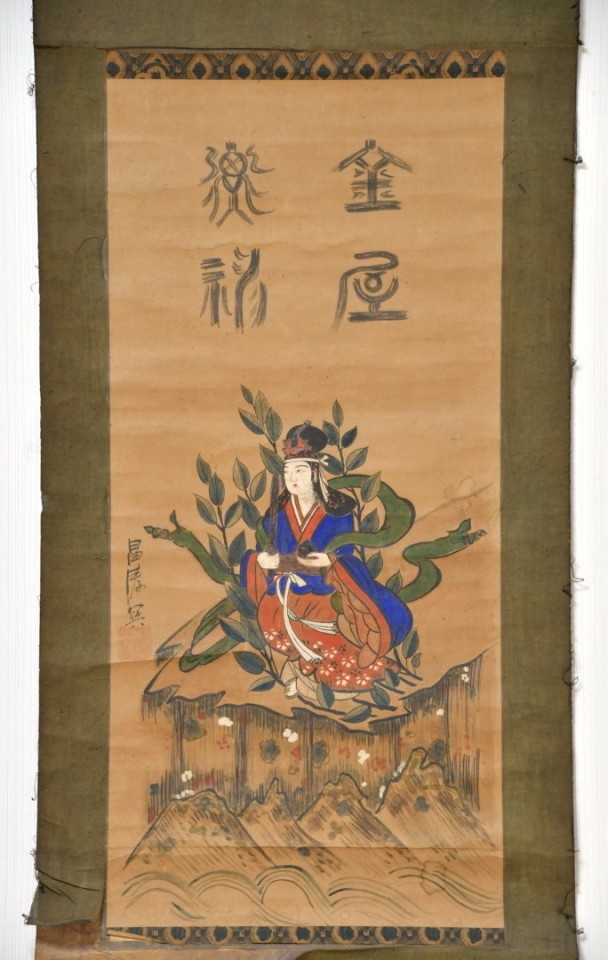
Kanayago is not the most consistent deity, at least in terms of her character details. She is most often said to be female, but is also occasionally cited as male.
She is sometimes said to be the same as Kanayamahiko-no-Kami (金山彦), or Kanayamahime-no-Kami (金山媛), or even Mahitotsu, all gods of mines and metalworking. Yet is other times simply a god that somehow relates to them, without explicitly being them.
What is consistent about her, is that she is a blacksmith, and is specifically a goddess of tatara furnaces, blacksmithing, fire and iron-making. These of course line up with Yago's domain quite well.
Kanayago is perhaps not as notable compared to Mahitotsu or the Ippon-datara, though I'm fairly sure that a connection exists regardless, if only a faint one.
Who knows? Maybe one day this connection will get expanded upon, and I'll get to tell you more about this goddess. (She's a very fascinating figure indeed, but that falls outside of our scope today.)
Sword: Sugari no Ontachi
Yago's goal in life is to one day make a weapon that's a perfect match for themself, but despite being a master at doing this for others, he simply cannot do so for himself.
Until that day finally comes, he instead uses the "Crested Ibis Sword", Sugari no Ontachi (須賀利御太刀).
Curiously, Yago's Sugari no Ontachi is said to be "the counterpart of another sword from the outside [world], and has lost its original owner and purpose".
We, of course, know nothing about its original owner or purpose, though the first part about it being a "counterpart of a sword from the outside" is indeed notable.
Counterpart Candidate #1: The Sugari no Ontachi
One candidate for this counterpart, is indeed, the Sugari no Ontachi itself.
Below: The real Sugari no Ontachi

That's right, the Sugari no Ontachi is not an original invention by JynX, but actually exists in reality.
The sword is one of the sacred treasures of the Ise Grand Shrine's Inner Shrine, in fact one of the most extravagant and important treasure of the shrine.
JynX titles it the "Crested Ibis Sword" (朱鷺剣) in Yago's spell Crested Ibis Sword "Sugari no Ontachi" because the sword is famous for having two crested ibis feathers decorating its hilt.
Below: A close up of the sword's hilt, showing off the pinkish red feathers of the crested ibis tied to it.
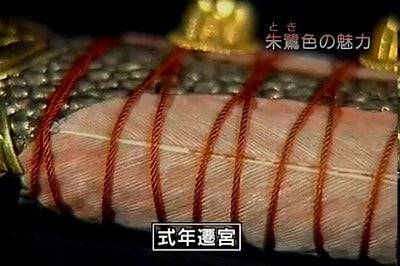
Despite the sword's sacred status, the ones you see in the above image is not actually the original sword.
You see the shrine has a tradition of being taken down and rebuilt every 20 years on an adjacent piece of land under the same exact specifications, based on the idea that new objects have greater divine power.
The Sugari no Ontachi is part of this tradition, ritualistically reforged every 20 years to retain its divine might. This would of course mean that the sword we have now is not the original, perhaps the original lies with Yago still?
Notably, the sword contains elements of its design that are anachronistic to when it should've first been forged, indicating that it must've received a redesign during one of these reforgings.
I do not know whether this should just be attributed to JynX not bothering to or not being able to copy the sword's design 1-to-1, but the sword in Yago's hand indeed features a slightly different design to the Sugari no Ontachi of our world, perhaps another point to Yago's being the original.
Counterpart Candidate #2: The Tamamaki no Ontachi
This is the other candidate for an outside world counterpart to Yago's Sugari no Ontachi, the Tamamaki no Ontachi (玉纏御太刀).
Below: The Tamamaki no Ontachi.

As you can see, the two swords are extremely similar in appearance, and are thus often considered a pair. In fact, the Tamamaki no Ontachi is also a sacred treasure of the Ise Grand Shrine's Inner Shrine and is similarly reforged every 20 years.
There's not much more tying the two swords together, but it doesn't take much investigation to see why this could be the counterpart to Yago's sword.
Yago as a God
Finally, I want to devote a small section to Yago's status as a god, as they're one of the few windows into what godhood is like in Mugenri (alongside Souko, of course).
Powers After Becoming a God
We know that Yago (and Souko too) didn't start off as gods, but instead as a "human-like" being (which I theorise to be the race that split into humans and non-humans in the future, like Hoojiro mentions).
Instead, they became gods after their contributions in certain fields got acknowledged, by a group of yet-unknown people, and they got promoted to godhood.
Alongside this, they gained incredible longevity, but is this the only power they gained as a god?
Curiously, Yago seems keenly aware of Suzumi messing with time during the evens of BPoHC, and is even able to hear the voice of Ardey, and deduce that there are two souls inside Suzumi.
It is curious that they are seemingly unable to detect the presence of Benny, perhaps it is simply because they didn't speak during that conversation, or perhaps there is something more here.
Whether this is something inherent to Yago or something that they learnt after becoming a god (personally I lean towards the later), it is still a very interesting tidbit.
Godly Spell Card Backgrounds
Now for a much more lighthearted one, Yago actually shares part of their spell card background with Souko, likely symbolising their equal status as gods.
Below: Yago's spell background (left) with Souko's overlaid on top (right).
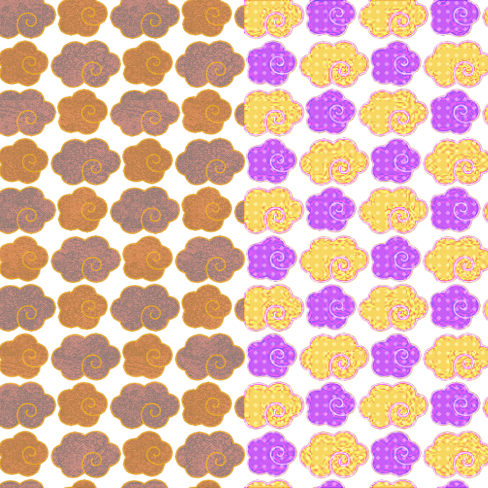
Clouds shaped like these have long been a popular motif for wood carvings decorating Japanese Shinto shrines and Buddhist temples, and so it's not surprise at all that Yago and Souko, gods themselves, would reference this pattern as well.
Below: A carving of a dragon surrounded by such clouds at the Suga Shrine (須賀神社), Yabu city, Hyōgo prefecture.

Ending
And that, I believe, concludes my revisit to Yago Ametsukana, my favourite Len'en character of them all.
I decided to really lean on the mythology side of things with this analysis, since it's what made me fall in love with Yago in the first place. Though I really enjoy them as a character too! Perhaps I'll write about that some other day~.
In any case, and as usual, I hope you enjoyed~! :)
#len'en#len'en project#len'en lore#yago ametsukana#honestly so glad to have done this#I feel like I really eclipse the original with this one#still gonna keep that one around though#it is my first analysis after all#and no reason to get rid of it when it's not wrong or anything
26 notes
·
View notes
Text
Free haiku-5: Dragonfly nymphs

Dragonfly nymphs (larvae of dragonflies) look like scorpions! Underwater scorpions.
2021.03.28
ヤゴ(トンボの幼虫) なんと、サソリに似ている!!水中サソリ。
2 notes
·
View notes
Text
【生育日記】出穂なう(あきたこまち)

↑とんぼ達の羽化場になっているあきたこまちの田んぼ。生命の営み。
朝見た時は羽化したばかりでしおしおだったけれど、数時間後に見たらしっかりとんぼの姿になっていました。

↑なんだろこれと思ったら、ヤゴ(とんぼの赤ちゃん)の抜け殻でした。

↑たつこもちに続いて、あきたこまちも出穂!おくるみされていた葉の中から、お米の赤ちゃんが顔を出しています。
ゆめおばこの出穂は、順調であれば1週間後の予測。
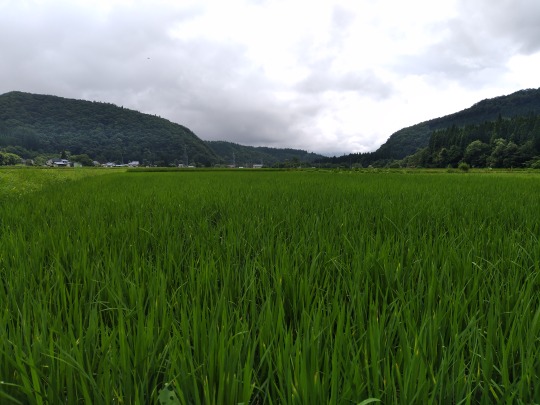
↑今日は厚い雲で秋田駒ヶ岳は見えませんでしたが、川側の田んぼ(あきたこまち)生育順調です。
↑川側の田んぼのすぐ左手には川が流れていて、大雨によりかなり増水しています。危ない。下流の方は気温差で雲が湧き上がっていました。これ以上増えないことを祈るばかりです。
2 notes
·
View notes
Text
Take Me To Church
こんにちは😃
もう落ち着いた感もありますが😅 コンクラーベ(カトリックの代表選挙)のニュースが話題でしたね💡
私は以前にもちょっと書いたことがありますが、代々敬虔なカトリックの家系の出身で叔父は神父です。そしてカトリックを脱会しています。
(ちょっとショッキングな告白かもですが、重く捉えないでください🙆♀️💦
私は連休中には上野でパンダを見てはしゃいだり、鬼滅の刃のリバイバル上映を見てギャン泣きしたり、調べに調べて行ったカレー屋さんがほぼ品切れで落胆のうちにタンドリー系とパパドだけ食べて帰ってきたり😭🍗 なんだかんだで楽しく暮らしています✨)
さてそんな最近ですが、今日はシェアしたい曲があってブログを書いてみました。タイトルにも書いたアイルランドの歌手Hozier さんのTake Me To Churchという曲です。
PVが歌詞付きでストーリー性もあってわかりやすいので早速載せてみます。(ccのボタンから日本語字幕が選択できます。)
youtube
真意はわかりませんが、これは教会とその同性愛に対する姿勢へのプロテストの曲との見方が一般的です。そしてカトリックは同性婚を認めておらず、離婚、堕胎、避妊に関しても否定的です。
グッドウィルハンティングという映画でマット・デイモンが “うちはカトリックだから子沢山の大家族さ” のようなジョークをいう場面が出てきます。多少信者の意識の変化はあるかもしれませんが、これは大昔の話ではなく今でも継続している考え方だと思います。
ここまで見るとちょっとネガティブな印象を与えてしまうかもしれませんが、私がここで書きたいのは宗教の否定ではなく卒業してもいいということです。
わかりにくくなりそうなのでトピックを分けました。
①思想体系
②あなたはあなた
③自分の足で
これらのトピックについてちょっと長いのですが、今日はまとめて一回で書いてみようと思います。休み休みお読みくださると嬉しいです。それではさっそく始めましょう!
(以下は私の意見なのでまるっと受け入れず、良ければご自身でも考えながらお読みいただけると嬉しいです。)
①思想体系
自身の信仰体験やカルト脱会者の話を聞いたりして私が強く思うのは、宗教、スピリチュアリズム、その他占いなどもシンプルにすれば誰かの考えだということです。
キリスト教の教義は弟子達によって作られて神学者によって洗練されていたり、仏教でもナーガールジュナやボーディーダルマが転機となって色々と派生しているのは知っていますが、あえて雑にまとめてしまうとキリスト教はキリストさんの考え、仏教はブッダさんの考えです。
幸福の科学の教祖、大川隆法さんはなんと!聖典を何度も書き直されていて、教義をアップデートしながら伝えられたところは誠実だなーなんて思ったりもします。
そしてここが重要なのですが、あなたに”バチっ”とくる恋人や親友はいないのでなんとなく目を瞑って上手いことやり過ごしながら暮らしているように、あなたにバチっとくる教えもありません!
それはあなたがあなたであり、あなたにとっての最高の恋人、友達があなたであるように、あなたにとって最高の教えはあなたの考えだからです。
②あなたはあなた
聖書には「あなたの父と母を敬え。」「子どもたちよ。すべてのことについて、両親に従いなさい。」と書かれています。
皆様はこの箇所を虐待によって亡くなった子供達のお墓の前で読めるでしょうか?私は考えただけでも涙が出てきてとてもできません。
もちろん聖書が虐待した親を敬えと言っているわけではなく細かく書かれていないだけなのでしょうが、正論や常識はおおかた正しくても自分に合わないものもあるし、今の自分にはできないことだってあります。
怠惰は聖書では大罪ですが、怠惰になってしまった経験は誰しも思い当たる時期があるでしょう。
③自分の足で
こういうことを考える時によく思い出す曲があります。
こんな重いテーマを扱った歌ではなさそうなのでファンの方には申し訳ないのですが、hide with Spread Beaver さんの ピンクスパイダーという曲です。RISEのカバーでも話題になりました。
youtube
この2:27あたりのところです。
” 借り物の翼ではうまく飛べず まっさかさま 墜落していく”
子供の頃ヤゴをとってきてベランダで育てていましたが、羽化した瞬間に羽が濡れて飛び立てず、トンボはバケツの中で死んでしまいました。
生き物にとって変態のあとはとても弱い時期だそうです。蛹から出たばかりの蝶も守られていたものを失って心細そうです。それは人間も同じだと思います。
大学進学、転職、離婚、弱っているときに誰かの思想は巧妙にあなたの中に入ってくるかもしれません。そしてそれが役に立つこともあるでしょう。
この歌詞のように借り物の翼、借り物の思想でも少しは飛べるかもしれません。でも最後は自分の翼で飛ぶのです。この歌詞は正確には蜘蛛が蝶の羽を借りてる感じで最後は自らのジェット(🕷️💨)で飛びますが、私たち人間に例えるなら自分の足で立つ、歩く。と言った感じでしょうか。
私は信仰について色々と考えたり学んできた中で、たくさんの刷り込まれた考えと自分の考えの相違に苦しむ人を見てきました。
youtube
これは ”Don’t die” というムーブメントを展開されているアメリカの実業家、ブライアンジョンソンさんの長生きや健康に関するドキュメンタリーですが、この中でもブライアンさんがモルモン教やそれを信仰する家族との関係に苦しみながら脱会する様子が描かれています。
今回この曲をシェアしたのは信仰に限らず、企業や家族の伝統の中でも起こりうることだと思うのですが、常識や周りとの価値観の違いに苦しんでいる方に、あなたには何事も卒業する権利があってあなたらしく生きることが結局あなたのためになり、地球のためになり、より良い未来につながると私は思っている!と伝えたかったからです。
世界的に多数派である教会へのプロテストソングとされるこの曲はなんと、イギリスの国営放送BBCで放映され
youtube
メゾンマルジェラのショーで使われ
youtube
元英国ロイヤルバレエ団プリンシパル、セルゲイ・ポルーニンさんもこの曲で踊っています。
youtube
セックスピストルズのションライドンさんもI am An Antichristと歌っていますが、こういう言いづらいけれど違和感があることに対してNOと言っている人は世界のどこかにいて、それをシェアする人もいて、一人じゃ無いんだ!と私は思ったので、これが誰かの励みになったらいいなあと思いブログを書いてみました。
私は宗教や伝統がダメだと言っているのではなく、もしあなたが何かの思想に現在影響されていたとしても、ちょっとおかしいなとか、変だなと思い始めたのなら、心の声を押し殺さず向き合ってみてもいいかもしれない。
あなたと同じ気持ちの人はあなたの周りにはいなくても、世界のどこかにいるかもしれない。と伝えたかったのでした。
ドイツの作家ヘルマン・ヘッセがこう書いています。
個性的な人物になるということは一つの長く厳しい戦いになります。※
もちろん今現在何かしっくりきている思想があって、あなたがその中で健やかに過ごせているならそれは素晴らしいことだと思います。
でもいつかあなたがあなたらしく暮らそうとするときに長く厳しい戦いに出会ったら、このブログが少しでも力になると嬉しく思います。
私はヨガを始めたことで考え方が広がり、色々なことから自由になれたのでヨガをシェアし始めました。でもそんな中でも悩むことがたくさんあって同志をいろんな場所で探しながらも、なんとか頑張っています!そんな私の経験がどなたかの参考になりますように💡
と、こんな変なブログばっか書いてないでヨガクラスの再会に向けて頑張れよって感じですね😭 継続して読んでくださってる方がいたらありがとうございます🙇♂️
どうか今後ともよろしくお願い申し上げます💦💦
ではでは最後までお読みくださり、本当にありがとうございました🙏
だんだん暑くなってきましたが、涼しくしてお水を飲んで楽しくお過ごしくださいませ♡
(引用)
※白取 春彦
ヘッセ 人生の言葉 エッセンシャル版
1 note
·
View note
Text
村井ネイチャーズDiary23

日に日に暖かくなり、気温も20℃を超える日が多くなってきましたね。

生き物たちも活発に動く季節になり、そろそろ採集シーズンの到来ですね!

そんな訳で行ってきましたよ。生き物採集に!
場所は小幡緑地公園の本園にある池からつながる小さなクリーク。

ここには夏場にたくさんの蛍が見れます。小川には蛍の幼虫のエサになるカワニナや水生昆虫や小魚がたくさんいます。
ルームから近場でもこんなに素晴らしい場所があるのは嬉しいですね。

今日の目的はヌマエビの種類をみてみようです。

チームに分かれて水草がある周辺をガサガサ。

落ち葉が堆積している場所もガサガサ。

手当たり次第にガサガサ。

結果は外見では判断がしづらく、おそらくカワリヌマエビ類ではなかと思います。それがたくさん採取できました。
あとはカワトンボのヤゴや、ウスバキトンボのヤゴも見つけました。

ルーム内ではクワガタの掘り出し体験をしました。

今年の冬に成虫へ羽化したメンガタメリークワガタ。

国産オオクワガタも掘り出しました!
隔週木曜日に村井ネイチャーズクラブで生き物採集をしています。
これからどんどん暖かくなるので、ガサガサ採集も定期的に行こうと思います。
0 notes
Text
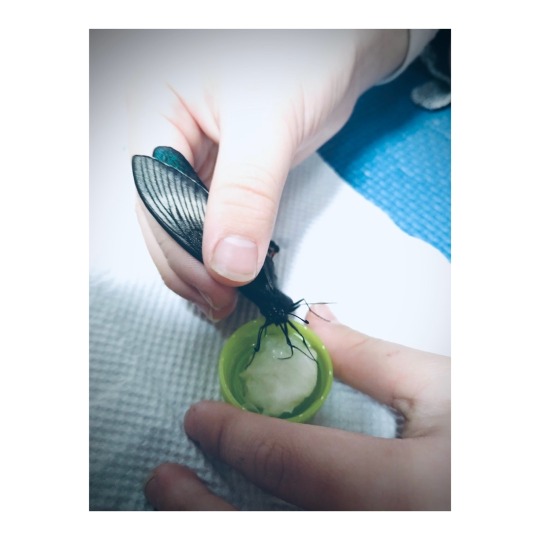




「春の知らせ」
博士
北海道ミヤマカラスアゲハ春型♂の羽化に成功
季節を知る
野生の勘
生き物の強さ
博士は常にその自然を肌で感じているよう
たくさんの種類のヤゴも飼いはじめ
オニヤンマとギンヤンマは
ご贔屓
ちゃっかりしたこだわり
博士の
自然体な姿と
笑い声
知らない世界を見せてくれる
わたしも野生の勘を見習い
おおらかで温かい場所へ
僅かに残る
野生の残り火を信じて
0 notes
Text

お堀の擬木の手すりにヤゴの抜け殻がくっついていた。何トンボのかなあ?(8月22日)
Skorupa larwy ważki
Dragonfly nymph shell
0 notes
Text
夏はヤゴ、秋には立派なとんぼラベルが印象的な海老名の銘醸蔵。
冬季は雪だるまラベル、とんぼさんは何処にいるのかというと、卵で越冬中です。
#いずみ橋 #しぼりたて粉雪にごり酒
開栓しています。

0 notes
Text
小山田浩子『パイプの中のかえる』
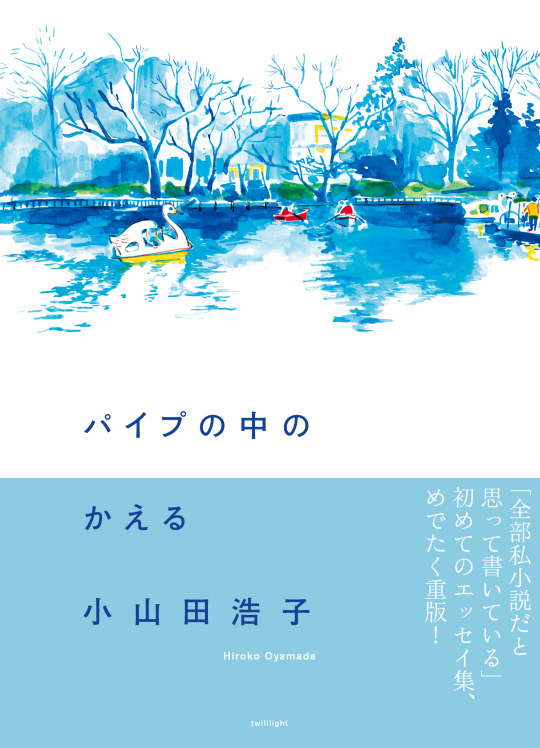
「全部私小説だと思って書いている」
近くに遠くに潜むいろいろなものに、気づくことの面白さと不思議さ。 日経新聞夕刊で半年間毎週連載したコラムに、書き下ろし2本をくわえた、芥川賞作家・小山田浩子初のエッセイ集がめでたく重版!
---
「広島の田舎で生まれ育ちいまも似たような地域に住んでいる私は、井の中の蛙というかパイプの中のかえるというか、狭い範囲で暮らしそれなりに充足していて、でもそこから顔を出し世界を見回すこともある」
《収録作品》 まえがき / メボ / 被災の国 / 衣替え / 女はしない / 鯛 / 呪いの小石 / 広島の「平和教育」 / 新しい「平和教育」 / 「平和教育」の先 / 名前のない読書 / Eテレさん / ヤゴ / 自動ドア / 朝の4時 / 生落花生 / 呼び方 / 故郷の言葉 / 買い物が苦手 / 映画 / オンライン / 缶コーヒー / ノートパソコン / 餅つき / 救急車 / 近くに遠くに
--
タイトル:『パイプの中のかえる』
著者:小山田浩子
装画: オカヤイヅミ
デザイン:横山雄
ISBN:978-4-9912851-4-1
判型:188mm × 127mm 並製
ページ数:120ページ
本体価格:1,650円
発行:ignition gallery
発行所:twililight
カタログ番号:ign-017
刊行日:2023年11月11日
--
《著者プロフィール》
小山田浩子(おやまだ・ひろこ)
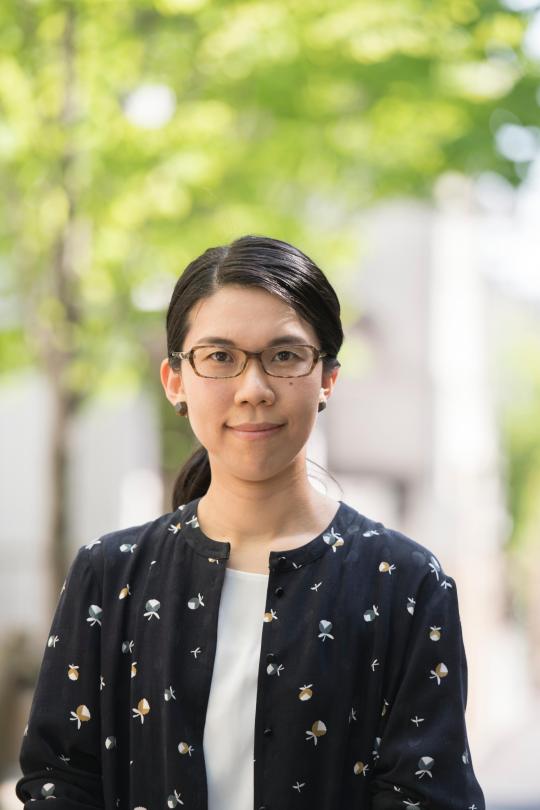
1983年広島県生まれ。2010年「工場」で新潮新人賞を受賞してデビュー。2013年、同作を収録した単行本『工場』が三島由紀夫賞候補となる。同書で織田作之助賞受賞。2014年「穴」で第150回芥川龍之介賞受賞。他の著書に『庭』『小島』がある。
--
お取り扱い店舗を募集中です。[email protected]までお気軽にお問い合わせください。
twililightのオンラインショップでも販売中。
0 notes
Text
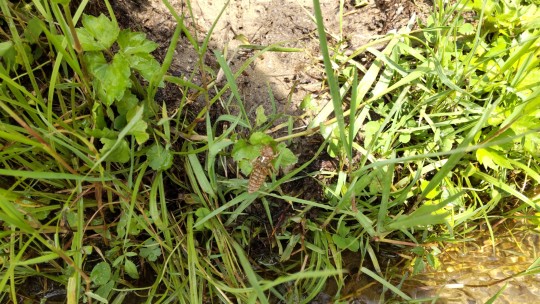
ヤゴ(抜殻)があった。
初めて見るレベル。誰かが言ってた。
ヤゴ(幼虫)の時は水中を泳げるのに、トンボ(成虫)になったら、空を飛べても泳げなくなる。なんだかなぁみたいなこと言っていた。
7月5日の話。
0 notes
